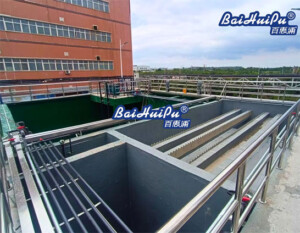Industrial wastewater treatment is an important part of environmental protection, aiming to remove harmful substances in wastewater or convert them into harmless substances to meet the requirements of discharge or reuse. Common industrial wastewater treatment methods mainly include the following:
1. Physical treatment methods
Physical treatment methods mainly use physical effects to remove suspended matter, colloids and other impurities in wastewater. Common physical methods include:
Gravity separation: Use gravity to make suspended matter in wastewater naturally settle and separate.
Centrifugal separation: Accelerate the separation of suspended matter in wastewater through the centrifugal force generated by centrifugal equipment.
Filtration: Use filter media (such as filter cloth, filter paper, etc.) to intercept suspended matter in wastewater to achieve solid-liquid separation.

2. Chemical treatment methods
Chemical treatment methods use the principle of chemical reaction to neutralize, oxidize, and reduce harmful substances in wastewater. Common chemical methods include:
Coagulation and sedimentation: Add coagulants to wastewater to aggregate suspended matter, colloids, etc. into large particles and settle.
Oxidation and reduction: Use oxidants or reductants to react with harmful substances in wastewater to change their chemical properties, making them harmless or easy to remove.
Neutralization method: By adding acid and alkali agents to adjust the pH value of wastewater, harmful substances are converted into precipitation or easy-to-remove forms.
3. Biological treatment methods
Biological treatment methods use the metabolism of microorganisms to decompose and transform organic matter in wastewater. Biological methods have the advantages of high treatment efficiency and low cost. Commonly used biological methods include:
Activated sludge method: Organic matter in wastewater is adsorbed, oxidized and decomposed by microbial communities in activated sludge.
Biofilm method: Organic sewage is treated using microorganisms (i.e. biofilms) attached and grown on the surface of certain solids. Biofilm method includes biofilter, biorotating disc, biological contact oxidation tank, etc.
Anaerobic biological treatment: Under anaerobic or hypoxic conditions, anaerobic microorganisms are used to decompose organic matter in wastewater to produce methane and other gases.
4. Physicochemical treatment method
Physicochemical treatment method is a treatment method that combines physical and chemical principles to remove pollutants in wastewater through specific chemical reactions and physical processes. Common physicochemical treatment methods include:
Adsorption method: Use the adsorption capacity of adsorbents (such as activated carbon, zeolite, etc.) to remove organic matter, heavy metal ions and other pollutants in wastewater.
Ion exchange: Use the exchange capacity of ion exchange resin to remove ionic pollutants in wastewater.
Membrane separation technology: Use membrane separation methods to treat wastewater, such as reverse osmosis, ultrafiltration, nanofiltration, etc., which can effectively remove soluble solids, colloids, bacteria, etc. in wastewater.
5. Combined process
In practical applications, due to the complexity of wastewater components, a single treatment method is often difficult to achieve ideal treatment effects. Therefore, physical, chemical and biological methods are often combined to form a combined process to achieve a more timely and economical wastewater treatment effect. For example, suspended solids in wastewater can be removed by physical methods, heavy metal ions in wastewater can be removed by chemical methods, and organic matter in wastewater can be removed by biological methods.
There are many common methods for industrial wastewater treatment. The specific method or combined process should be considered comprehensively based on the nature of the wastewater, treatment requirements, economic costs and other factors.